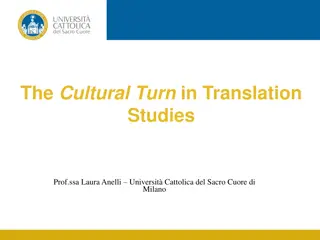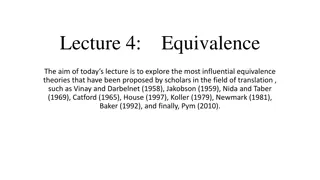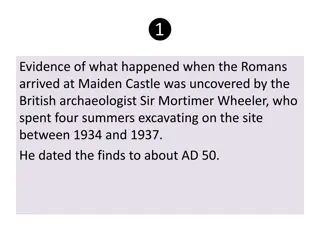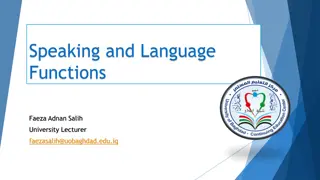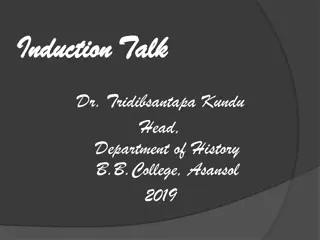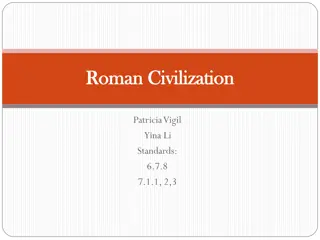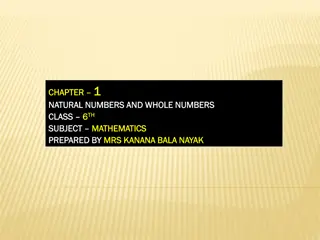Understanding Roman Jakobson's Six Language Functions
Roman Jakobson, a prominent linguist, defined six functions of language, each associated with a specific factor. These functions include referential, poetic, emotive, conative, phatic, and metalingual functions. Through his work, Jakobson emphasized the various aspects of communication and how language serves different purposes beyond mere information exchange.
Download Presentation

Please find below an Image/Link to download the presentation.
The content on the website is provided AS IS for your information and personal use only. It may not be sold, licensed, or shared on other websites without obtaining consent from the author. Download presentation by click this link. If you encounter any issues during the download, it is possible that the publisher has removed the file from their server.
E N D
Presentation Transcript
xxxxx xxxxx Roman Jakobson (1896-1982)
Language Functions Roman Jakobson defined six functions of language (or communication functions), according to which communication can be described. Each of the functions has an associated factor. For this work, Jakobson was influenced by Karl B hler's organon model, to which he added the poetic, phatic and metalingual functions. an effective act of verbal
Language Functions The referential function: corresponds to the factor of Context and describes a situation, object or mental state. The descriptive statements of the referential function can consist of both definite descriptions and deictic words, e.g. "The autumn leaves have all fallen now." Similarly, the referential function is associated with an element whose true value is under questioning especially when the truth value is identical in both the real and assumptive universe. The poetic function: focuses on "the message for its own sake" (the code itself, and how it is used) and is the operative function in poetry as well as slogans. The emotive (alternatively called "expressive" or "affective") function: relates to the Addresser (sender) and is best exemplified by interjections and other sound changes that do not alter the denotative meaning of an utterance but do add information about the Addresser's (speaker's) internal state, e.g. "Wow, what a view!"
Language Functions The conative function: engages the Addressee (receiver) directly and is best illustrated by vocatives and imperatives, e.g. "Tom! Come inside and eat!" The phatic function: is language for the sake of interaction and is therefore associated with the Contact/Channel factor. The Phatic Function can be observed in greetings and casual discussions of the weather, particularly with strangers. It also provides the keys to open, maintain, verify or close the communication channel: "Hello?", "Ok?", "Hummm", "Bye"... The metalingual (alternatively called "metalinguistic" or "reflexive") function: is the use of language (what Jakobson calls "Code") to discuss or describe itself.
Language Functions The model that served as the foundation for Roman Jakobson s expansion and development of the communicative functions of language was originally developed by Karl B hler. His system, known as the Organon Model, represented the three primary components of language. B hler developed his conception of the triadic instrumental character of language on the basis of the three fundaments of the speech situation, namely addresser, addressee, and things as the objects of discourse .Figure A is his original depiction of these three fundaments, while his later work, shown in Figure B, considers not only the focus of conversation but also the function which each performs: expressing the addresser s emotion, the appeal towards the addressee, or reference to or representation of an object or the state of affairs.
Language Functions Roman Jakobson proposed three additional functions, making a total of six fundamental factors, each assuming an orientation within the verbal message:
The table below is a compilation that contains a brief overview of each functions classification, orientation, role, and an example to illustrate its use: Classification Function Examples Strongest Factor Context Referential descriptions,contextual information Our business hours are 9am-5pm, Monday through Friday. Emotive Addresser interjections/expressions of emotional state concernedwith commanding; vocative or imperative addressing ofthe receiver Oh, man Awesome! Whew! Go on, open it! Shoo. Get out of here.Check this out. Addressee Conative Hey! Mmmhmmm .How about that? Really? Noway. Contact concerns channelof communication; performs social task as opposed to conveying information; to establish, prolong, or discontinue conversation Phatic Metalinguistic Code requires language analysis; using language to discuss language Noun, adjective, code- switching Water is a non-count noun, right? Message involves choosingwords carefully; theartofwords, oftenself- reflective Poetic/Aesthetic But, soft! What light through yonder window breaks?
Language Functions These classifications are by no means intended to be considered as mutually exclusive; rather, each utterance can be classified into the function whose primary purpose it serves, but many speech events will serve a complex purpose. As such, it is sometimes up to the discretion of the speaker, listener, or analyst to determine the intent behind what is being expressed, which can pose challenges in communication, particularly for speakers with lower levels of proficiency.
Language Functions In The Speech Event and the Functions of Language, Jakobson (1995) explains that although we distinguish six basic aspects of language, we could hardly find verbal messages that would fulfill only one function. The diversity lies not in a monopoly of some one of these several functions, but in a different hierarchical order of functions . The Necker cube, whose lower-most left or uppermost right corner may be perceived as being closest to the observer, is illustrative of the subjectivity with which utterances may be perceived and their functions classified, but at least one of the six functions in Jakobson s model will always be present and essential to effective communication. The sections that follow will describe the functions included in Jakobson s model and discuss considerations for each in the field of TESOL.
References Middleton, Richard (April 1, 1990). Studying Popular Music. Philadelphia, UK: McGraw-Hill Education. p. 241. ISBN 0-335-15275-9. Waugh, Linda R. (1980). "The Poetic Function in the Theory of Roman Jakobson". Poetics Today. Duke University Press. 2 (1): 57 82. doi:10.2307/1772352. "The Real Functions of Language". Paper Written. January 16, 2017. Retrieved August 18, 2017. Angela C. Tribus, The Communicative Functions of Language: An Exploration of Roman Jakobson s Theory in TESOL, Thesis, Spring 5-1- 2017.
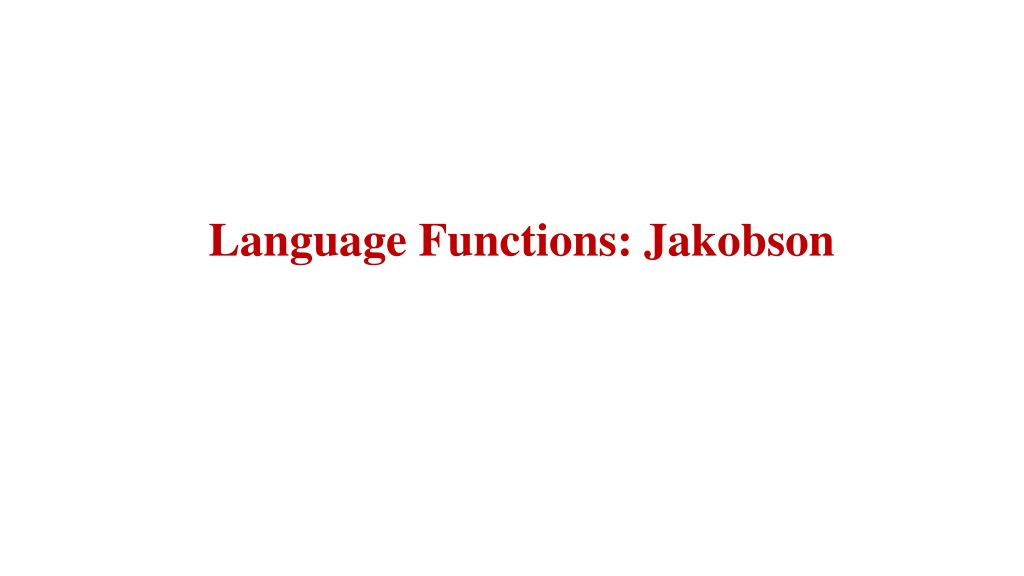

![Read⚡ebook✔[PDF] Blood of the Provinces: The Roman Auxila and the Making of Pro](/thumb/20539/read-ebook-pdf-blood-of-the-provinces-the-roman-auxila-and-the-making-of-pro.jpg)
![READ⚡[PDF]✔ European Mail Armour: Ringed Battle Shirts from the Iron Age, Roman](/thumb/20552/read-pdf-european-mail-armour-ringed-battle-shirts-from-the-iron-age-roman.jpg)



